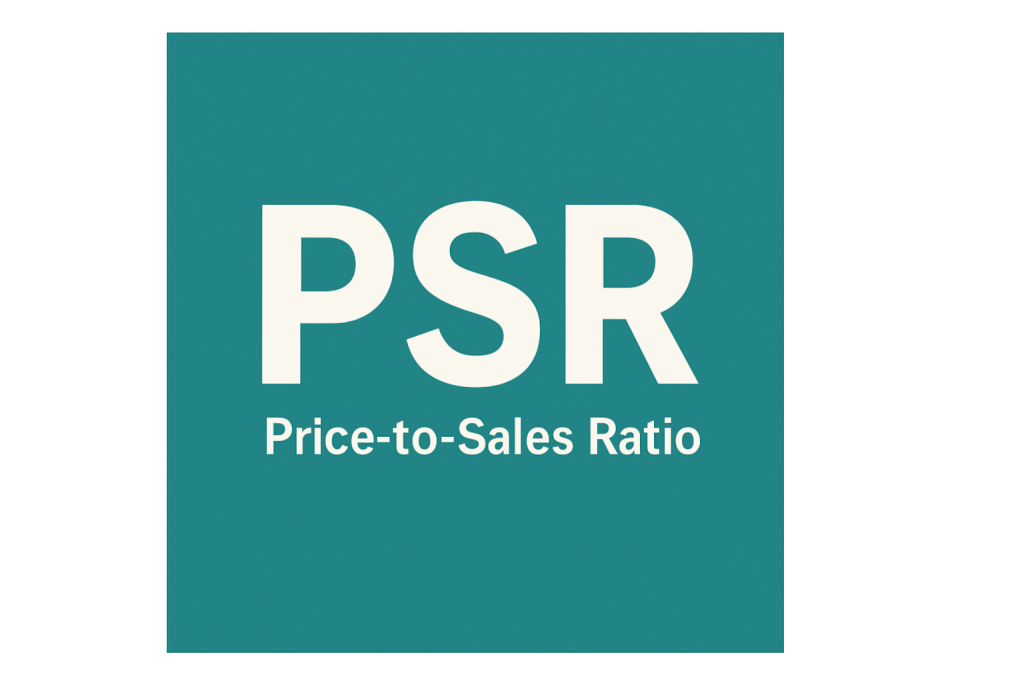When investing in stocks, you often hear about P/E or P/B ratios.
But what if a company has no profits yet? That’s where PSR (Price-to-Sales Ratio) comes in.
This guide will explain what PSR means, why it matters, and how to use it—especially for beginners.
💡 What Is PSR?
The Price-to-Sales Ratio (PSR) measures a company’s stock price relative to its revenue.
Formula:
- PSR = Market Capitalization ÷ Annual Revenue
- or PSR = Share Price ÷ Sales per Share (SPS)
👉 In simple terms: How many times sales is the stock being valued at?
✅ Why Does PSR Matter?
- Useful for unprofitable companies
- The P/E ratio doesn’t work if a company has no earnings.
- Many startups, tech firms, and biotech companies are unprofitable but still generate revenue. PSR lets you evaluate them.
- Better fit for growth stocks
- Revenue is harder to manipulate than earnings.
- For fast-growing companies, focusing on sales often gives a clearer picture of potential value.
📊 Example: How to Calculate PSR
Suppose a company has:
- Market Cap = $1 billion
- Annual Revenue = $500 million
👉 PSR = $1B ÷ $500M = 2.0
This means the stock is valued at 2× its annual sales.
🔍 How to Interpret PSR
| PSR Value | What It Means |
|---|---|
| Below 1 | Possibly undervalued compared to sales |
| 1–3 | Normal range (depends on industry) |
| Above 5 | High valuation—growth expectations priced in |
⚠️ Note: Always compare PSR within the same industry. For example, SaaS firms usually have higher PSRs than manufacturing companies.
📈 When Is PSR Most Useful?
- Startups or growth companies with little or no profit
- Biotech or tech firms with high R&D expenses
- Firms transitioning from losses to potential future profitability
🔒 Limitations of PSR
- Revenue ≠ Profit: A company can have growing sales but still lose money.
- Low margins risk: If a business burns cash to boost sales, PSR may look attractive but doesn’t reflect profitability.
👉 That’s why PSR should be combined with other ratios like P/E, P/B, ROE, or Free Cash Flow (FCF).

📝 Quick Summary
| Metric | What It Shows | Why It Matters |
|---|---|---|
| PSR | Price vs. sales | Useful for loss-making firms |
| < 1 | Undervalued zone | Stock priced below sales |
| 1–3 | Fair value range | Depends on industry norms |
| > 5 | Risky high valuation | Market pricing in aggressive growth |
🏁 Final Thoughts
The Price-to-Sales Ratio (PSR) is a powerful tool when P/E is unavailable—especially for growth stocks and startups.
But remember: Sales alone don’t guarantee profits.
👉 For smart investing, always use PSR together with profitability and cash flow metrics.
That way, you can avoid overpaying for growth stories that might not turn into real earnings.
📝 Disclaimer
This article is intended for educational purposes only. It does not constitute financial, investment, or legal advice. All investment decisions involve risks, and readers should conduct their own research or consult with a licensed financial advisor.
👉 What Is the P/E Ratio? A Beginner’s Guide to Understanding Stock Valuation
👉 What Is the P/B Ratio? A Beginner’s Guide to Understanding Stock Valuation
